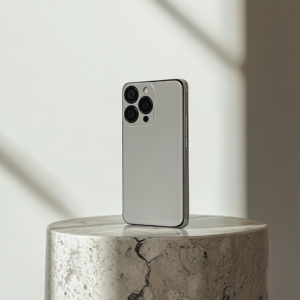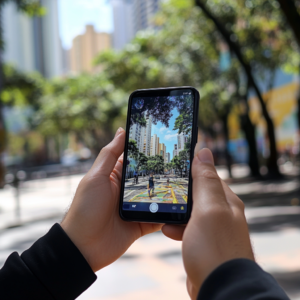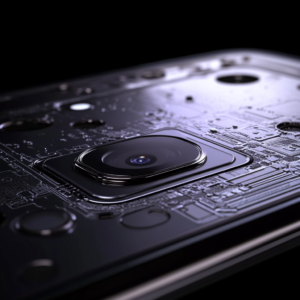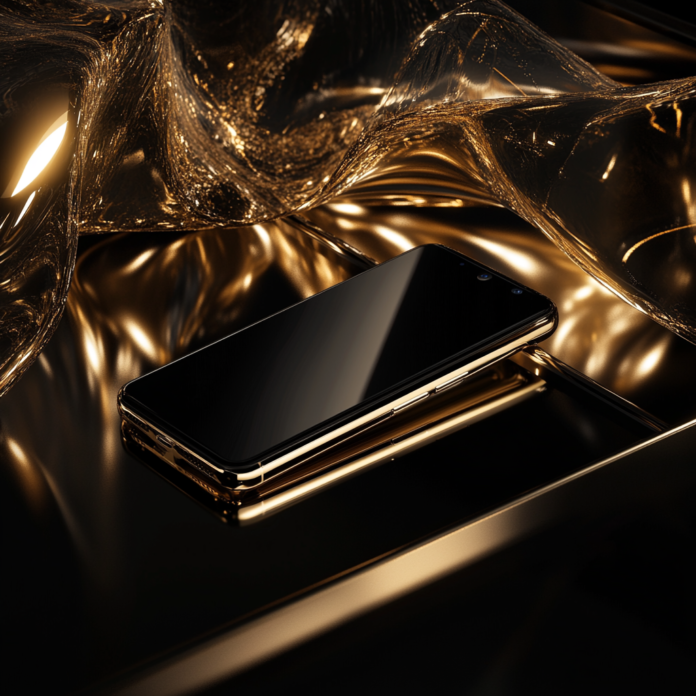1. Introduction
Smartphone Camera Comparisons: Which devices truly lead the pack? As phone manufacturers compete fiercely to deliver the best shooting experience, consumers face a dizzying array of choices. I have spent countless hours testing various models to understand how software, hardware, and design philosophy combine to produce exceptional or mediocre results. With everything from advanced night modes to AI enhancements, modern phones push boundaries once reserved for dedicated cameras. In this article, I will guide you through essential details about sensor size, aperture, dynamic range, and more, showcasing how each aspect shapes image quality. Additionally, I will share insights from both expert benchmarks and my own real-world experiences. Along the way, you will find references to key external sources, like the Apple Official Website for detailed camera specs, as well as internal links to Smartphone Security: Top Tips to Protect Your Data on VikingBytes.com. My goal is to provide a well-rounded perspective so that you can decide which smartphone truly suits your photographic needs.

2. Evolution of Smartphone Photography
The journey from simple VGA shooters to sophisticated multi-lens systems is nothing short of remarkable. Initially, phone cameras were an afterthought, relegated to grainy pictures under good light. As consumer interest in mobile photography soared, manufacturers invested heavily in better sensors, improved lenses, and more advanced software. This rapid evolution created an environment ripe for Smartphone Camera Comparisons: Which phone captures more detail, performs better in low light, or handles fast-moving subjects with minimal blur? Brands like Nokia, HTC, and Sony pushed sensor tech and lens arrangements early on. Over time, Apple and Samsung honed user-friendly camera apps to simplify advanced features for mainstream users. Today, multiple lenses—ranging from ultrawide to telephoto—incorporate computational photography to deliver professional effects. Coupled with AI, these enhancements have redefined consumer expectations, making it vital to understand which phones excel. For additional perspective, visit the Samsung Global Galaxy Page, which features extensive information on Samsung’s latest innovations in smartphone cameras.
If the link still appears empty on your end, please try accessing it from another browser or device, as sometimes regional restrictions or browser settings might affect visibility.
3. Key Camera Features and Technologies
Modern smartphone cameras integrate multiple features that collectively shape image quality. Sensor size dictates how much light the camera captures, while pixel binning merges data from multiple pixels for improved brightness. Image Stabilization (OIS or EIS) keeps footage steady when recording video. Equally important is software: scene detection can automatically tweak settings, and AI might sharpen fine details. Smartphone Camera Comparisons: Which brand implements these features best? Typically, high-end flagships incorporate them well, though mid-range phones have begun to follow suit. When analyzing specs, remember that hardware alone does not guarantee top photos—smart image processing matters greatly. A robust camera app offering manual controls can extend your capabilities beyond what auto modes allow. If you want an engaging, high-audience take on comparing camera phones, check out this viral YouTube video by MKBHD with millions of views: MKBHD Camera Comparison, which breaks down multiple flagship shooters in depth.
4. Sensors and Image Quality
Sensor design underpins camera performance. Larger sensors capture more light, boosting detail in low-light scenarios. Sony, Samsung, and Omnivision supply many smartphone sensors, each varying in pixel size and readout speeds. Smartphone Camera Comparisons: Which sensor dominates? Sony’s IMX series frequently appears in top-tier phones, prized for fast autofocus and broad dynamic range. Yet, the same sensor can yield different results if brands tune it differently. Quad or nona-binning merges data from neighboring pixels, brightening images at night but potentially losing detail in daylight. Choose a phone that matches your style, whether it’s capturing nightscapes or vibrant daytime shots. Some phones rely on dedicated night modes, while others employ advanced lens elements. Understanding these trade-offs lets you select a device that excels in your most common shooting conditions.
5. Aperture, Lenses, and Low-Light Performance
Aperture values (f-numbers) reflect lens openings, influencing how much light enters. Lower numbers such as f/1.5 admit more light, important for freezing motion in dim conditions without jacking up ISO. Smartphone Camera Comparisons: Which models shine in low-light? Premium flagships often feature variable apertures or high-quality coatings to reduce flare. Others stack multiple frames digitally to brighten final images. Additionally, lens quality matters. Partnerships with firms like Zeiss or Leica can reduce distortion or chromatic aberration. Although marketing hype surrounds these collaborations, subtle design advantages can improve daily shots. If you crave nighttime cityscapes with minimal noise, evaluate aperture specs carefully. Still, note that advanced computational modes might offset narrower apertures. Balancing raw hardware with software wizardry helps secure consistent results, even in challenging lighting.
6. AI and Computational Photography
Artificial intelligence transforms how modern phones capture and refine pictures. AI detects scenes—landscape, portrait, food—and adjusts settings for color and contrast. Some phones remove unwanted objects or propose alternative compositions. Smartphone Camera Comparisons: Which devices are best at computational photography? Google’s Pixel series stands out, leveraging AI to overcome hardware limits and produce crisp images. Apple’s Deep Fusion polishes mid to low-light scenarios by merging frames. These techniques can elevate a phone with smaller sensors, letting it compete against hardware powerhouses. When you read camera specs boasting advanced AI, remember that real-world performance hinges on robust software. A high megapixel count matters less if post-processing is subpar. Assess actual sample shots and user feedback, because effective AI can narrow the gap between mid-range devices and premium flagships.

7. Image Stabilization Methods
Shaky hands can ruin an otherwise perfect shot, so effective image stabilization is crucial. Optical Image Stabilization (OIS) physically adjusts lens elements or the sensor to counteract movement, while Electronic Image Stabilization (EIS) uses software to align frames and reduce jitter. Many flagship models offer both methods to ensure steady footage in various conditions. For more reliable stabilization, check out our recommended product.
This tool has helped me a lot in creating the right prompts to generate amazing images. Check out the best AI for creating images and videos here.
8. Video Capabilities and Frame Rates
Video performance is as vital as still imagery for many users. Modern phones often include 4K 60fps or even 8K recording, though high resolutions rapidly drain battery and storage. Frame rate choices like 120fps or 240fps facilitate slow-motion. Smartphone Camera Comparisons: Which brand leads in video? Apple’s iPhones historically excel at color consistency, while certain Android models push the envelope with 8K or creative filters. HDR video further enhances contrast. Also, monitor audio capture, since muffled sound can undermine strong visuals. If your tasks involve vlogging or professional content, a phone that supports higher bitrates with minimal compression might matter more than raw resolution. Evaluate thermal management, too—some phones overheat when recording 4K for extended periods, forcing abrupt shutdown or quality drop. Keeping an eye on each phone’s approach to video modes, stability, and microphone clarity ensures you pick a device fitting your production needs.
9. Zoom Options Explained
Telephoto lenses enable optical zoom, preserving quality, while digital zoom crops the image at the risk of noise or detail loss. Many phones include periscope-style designs to achieve 5x or 10x optical zoom. Smartphone Camera Comparisons: Which phones handle zoom transitions gracefully? Certain brands maintain uniform color across wide, main, and telephoto, while others shift white balance or crispness. Hybrid zoom merges optical and digital, often relying on AI to fill gaps. Although extreme zoom levels like 100x garner headlines, actual usability above 10x is debatable. Images can appear muddy or artifact-laden. If you plan moderate zoom for daily use—portraits or wildlife—prioritize consistent performance up to 5x or 10x. That said, telephoto approaches vary widely, so checking sample shots or reading in-depth reviews remains wise before buying.
10. Dynamic Range and HDR Impact
HDR (High Dynamic Range) merges multiple exposures to balance highlights and shadows. This approach prevents overexposed skies while maintaining detail in darker areas. Some phones employ auto HDR when scene contrast exceeds a threshold. Smartphone Camera Comparisons: Which phones excel at HDR blending? Flagship devices often manage real-time HDR in both photos and video. However, motion ghosting can occur if objects shift during exposures, and some phones handle this better. Testing backlit portraits or rooms with bright windows clarifies HDR modes. The best ones subtly enhance contrast without introducing halos or oversaturation, preserving a natural look. If you shoot high-contrast scenes often, consider phones renowned for advanced HDR. Real-life usage with strong sunlight or interior-exterior transitions indicates how effectively a camera balances exposures.
11. Color Science Variations
Each manufacturer’s color science heavily influences out-of-camera results. Samsung tends toward vivid hues, while Google’s Pixel aims for balance, and Apple prefers natural skin tones. Smartphone Camera Comparisons: Which approach do you prefer? Some crave vibrant Instagram-ready photos, others want subdued realism. Testing side-by-side images or browsing online galleries helps you identify a brand’s color signature. Certain phones let you tweak the color profile for more neutrality or punch, which is helpful if you prefer editing later. If you post-process raw captures, color science can be adjusted afterward. On the other hand, if you post directly to social channels, a phone offering rich, consistent colors may better suit your needs. This personal choice underscores how crucial it is to match color rendering with your creative tastes.
12. Selfie Cameras and Front-Facing Innovations
Front-facing cameras matter for selfies, video calls, and social sharing. Many adopt wide-angle lenses or sophisticated portrait modes, enabling bokeh or group shots. Some devices add secondary front lenses, achieving more realistic depth maps. Smartphone Camera Comparisons: Which phones excel at selfies? Flagships typically incorporate advanced HDR to keep faces and backgrounds evenly lit. Beauty filters vary, letting you dial in how aggressively they smooth skin or brighten complexions. Phones aiming at influencers or streamers often include front-facing flash or screen illumination. Additionally, check for stabilization when capturing selfie videos—vital for on-the-go content. I found certain devices produce crisp, well-balanced selfies, while others blow out highlights or distort skin tones in bright conditions. If streaming or front-camera photography is your priority, weigh these specs carefully.
13. Software and Post-Processing Effects
Camera software impacts final images more than many realize. Some apps offer manual modes for shutter speed, ISO, or focus, while others rely heavily on auto AI to interpret scenes. While automation often yields impressive shots, experienced photographers may crave more manual control. Extra effects—long exposure, selective color, or in-app filters—add creativity. Smartphone Camera Comparisons: Which interface suits your workflow? iPhones are clean yet powerful, Samsung offers a variety of modes, and Google keeps it simple but leverages hidden AI strength. Post-processing also diverges. Some phones aggressively sharpen images, which can look impressive on small screens but appear unnatural when zoomed in. Others adopt milder tweaks for a more realistic, if less immediately striking, result. If you love dynamic, high-saturation photos, certain brands cater to that style. For those who desire authenticity, a phone with gentler processing might appeal.

14. Battery Life and Shooting Endurance
High-resolution photos or 4K video recording can significantly tax the processor and image signal processor, boosting power consumption. Phones with modest batteries may falter in long photography sessions. Smartphone Camera Comparisons: Which devices excel under sustained workloads? Efficient chipsets (e.g., Qualcomm Snapdragon or Apple A-series) handle load effectively, enabling more captures or longer clips. Rapid charging helps keep pace during busy shoots. In my usage, certain phones delivered impressive images but overheated or died quickly under continuous recording. Occasional shooters might find any modern model suitable, but media-centric users require a well-balanced solution to minimize interruptions. Endurance matters if you frequently travel or document events. A phone that merges camera prowess with robust battery capacity keeps you shooting through the day, averting the hassle of power banks or searching for outlets mid-project.
15. Expert Benchmarks and Real-World Use
Lab measurements from recognized testing bodies detail resolution charts, color precision, or noise levels. While these scores guide your decision, real-world conditions sometimes diverge from controlled labs. Light angles, dynamic motion, and AI adjustments vary unpredictably outside. Smartphone Camera Comparisons: Which approach is more conclusive? Blending lab data and anecdotal usage is best. Lab insights clarify technical peaks or flaws, but everyday use highlights how the camera copes with unpredictable subjects—kids at play, nighttime city lights, or scenic getaways. For example, a phone might excel under balanced studio lighting but stumble in extreme low light, or the opposite. By combining objective data with personal impressions, you develop a full perspective of each phone’s camera potential. If one model consistently excels in both realms, it likely delivers top-tier results. Should large discrepancies emerge, investigate why before investing.
16. Smartphone Camera Comparisons: Which Brands Dominate
Many question: “Smartphone Camera Comparisons: Which brand reigns supreme?” Truthfully, rankings shift. iPhones often perform reliably across conditions, while Samsung’s Galaxy devices emphasize saturated color and robust camera options. Google’s Pixel line showcases AI wizardry that defies hardware constraints. Huawei, in partnership with Leica, pushes dynamic range and night capabilities. Meanwhile, OnePlus or Xiaomi challenge the norm, combining powerful hardware with competitive pricing. Sony refines its flagship line for enthusiast photographers. Ultimately, brand hierarchy depends on your preferences—some users appreciate accurate rendering, others value top-notch zoom or near-flawless night modes. Researching brand signatures, from color science to feature sets, helps you pick a phone that aligns with your creative aims. External references such as DXOMARK publish detailed comparisons, though always pair lab findings with your personal shooting priorities.
17. Price vs. Performance Ratio
Flagships usually boast the most advanced cameras, but some mid-range or affordable phones rival them in certain settings. Many incorporate near-premium sensors and decent AI while skimping on secondary perks like wireless charging. Smartphone Camera Comparisons: Which devices deliver the best return on investment? Google’s Pixel “a” models or Xiaomi’s sub-brands often offer stellar results for less. Meanwhile, older flagships that have dropped in price can maintain high-level camera quality. Ask yourself if extra features like 8K video or advanced telephoto matter. If not, a mid-tier phone might suffice. Or you can buy last year’s top dog for a fraction of the new model’s cost. Identifying your usage patterns and budget ensures you land a phone that balances camera performance with affordability, without overspending on rarely used bells and whistles.
18. Additional Insights and Use Cases
Different photographers seek diverse qualities. Travel enthusiasts prioritize dynamic range and low-light ability for capturing scenic diversity. Vloggers might crave top-tier stabilization and crisp audio, while parents want swift autofocus for active children. Smartphone Camera Comparisons: Which phone fits each scenario? One brand might excel at nighttime cityscapes, another leads for front-facing video, and another offers best-in-class macro detail. Understanding your usual subjects clarifies priorities. In my tests, some cameras nail close-ups but flounder on wide vistas; others render group shots well but oversaturate subtle shades. Aligning your typical usage—be it food images, city explorations, or spontaneous family moments—guides you toward a phone that consistently meets expectations and fosters a satisfying shooting experience.
19. Frequently Asked Questions (FAQ)
Q1: Do more megapixels mean better photos?
A1: Not necessarily. “Smartphone Camera Comparisons: Which phone shoots best?” repeatedly underscores that software, sensor size, and lens calibration often trump pure megapixel numbers. A well-tuned 12MP system can beat a 108MP setup lacking AI refinement.
Q2: Which phone is best for vlogging?
A2: You want stable 4K at 60fps or higher, with robust color consistency and minimal heat issues—iPhones excel here, as do select Samsung devices. Assess microphone quality and any advanced video modes.
Q3: Can mid-range cameras match flagships?
A3: Yes, some mid-range models integrate premium sensors or effective AI, rivaling flagships in general scenarios. However, cutting-edge scenarios like ultra-low light or extensive zoom often favor flagships.
Q4: Why is color science different across brands?
A4: Each company tailors saturation, warmth, and contrast differently. Samsung leans bold, Google aims neutral, Apple seeks natural skin tones. Preferences vary by user, making in-person testing valuable.
Q5: Are older flagship phones still worth it?
A5: Absolutely. Many older champions retain impressive camera hardware, dropping in price as new models debut. Their advanced features typically remain competitive for everyday photography.
20. Conclusion and Final Remarks
Smartphone Camera Comparisons: Which phone genuinely shines across diverse situations? No single device claims universal superiority—some are night-shot masters, others excel at auto modes or advanced video. As mobile cameras edge ever closer to standalone compacts, your phone effectively documents your life. Exploring sensors, AI techniques, lens arrays, and brand approaches lets you pinpoint the phone that mirrors your style, whether you share bright color-saturated images or edit for realism. I hope this comprehensive guide demystifies the camera phone landscape. With an informed outlook on brand heritages, price strategies, and field performance, you can identify a device that captures your world to perfection. Let your next image gallery showcase the innovative possibilities of Tech for Professionals: Essential smartphone cameras.
